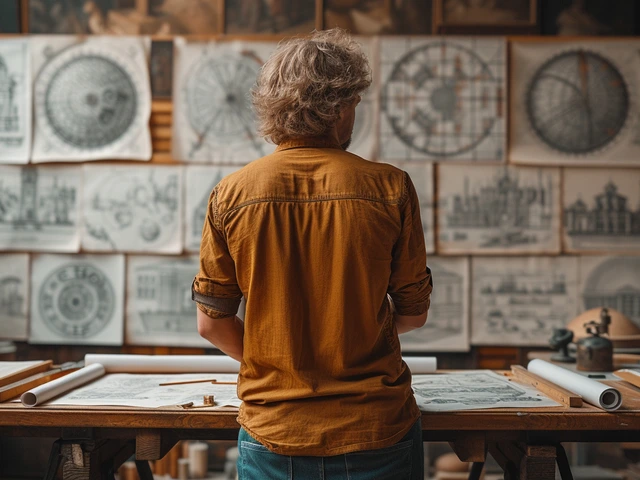Unveiling the Shadows: Understanding the Heart of Renaissance Architecture
Imagine gazing at the radiant facade of Florence's Santa Maria del Fiore cathedral, or traversing the grand corridors of the Vatican's St. Peter's Basilica. Isn't it awe-inspiring? As a self-confessed history nerd and aspiring architecture enthusiast, I'll be taking you on a tour today through the monumental and influential world of Renaissance Architecture. There’s nothing more exciting than delving into history and tracing how the past has shaped our present, is there? Well, I can't think of anything better, but Lydia, my better-half, has her heart set on gardening. Different strokes, eh?
Origins and Influences: Renaissance Architecture's Cradle
Our journey begins in a period when art and architecture took a dramatic, intrepid detour from the prevalent Gothic and Medieval forms. Renaissance Architecture, a term derived from the French word for 'rebirth', came to life in the early 14th century Italy. A time when the human spirit was rekindling its interest in the classic arts and the teachings of ancient Greece and Rome. Influences from the past were brushed off the dust and given a fresh breath of life.
The movement was as much a social and cultural reaction as it was an aesthetic endeavour. As I contemplate this, I recall a visit with Lydia to one of New Zealand's hidden gems, the Church of the Good Shepherd. This modest, rustic beauty could not be further off in style from the Renaissance ethos, yet the sense of community and unity it evokes brings me back to the same human-centric idea that fuelled the Renaissance.
The Pillars of Renaissance Architecture: Symmetry, Proportion, and Order
The defining characteristic of Renaissance architecture lies in its commitment to symmetry, proportion, and order, values it shares with its ancient Greco-Roman predecessors. Renaissance architects had a profound appreciation for geometric clarity and employed mathematical precision. Calculated arches, harmonious domes, and balanced columns were the order of the day, making each building a testament to the harmonious blend of science and art.
It's a bit like the time I tried to replicate Michelangelo’s Sistine Chapel on our living room ceiling with a box of chalk. Lydia was not amused, but I suppose it was still a learning experience. Let's just say order and geometry were not my greatest victory that day.
The Beacon of Progress: Renaissance Architecture's Impact on Society
Literacy, individualism, and progress were core values of the Renaissance period, and architecture played a vital role in mirroring these societal changes. Think of a building as a mirror reflecting the epoch, its people, and their values. The art of building was no longer just a physical endeavour but a metaphorical tool, propelling society towards progress.
Just as coffee connoisseurs find hidden notes of flavour in their brew, savour the wisdom in appreciating Renaissance architecture. Next time you’re in Wellington's city centre near Lambton Quay, look around. Try to catch the subtle architectural nuances that speak of the city's growth and progression. Lydia often accompanies me on these casual architecture-spotting strolls, marking the memories shared and stories told by the changing landscape.
From Italy to the World: The Global Influence of Renaissance Architecture
From the land of olive groves and pizza, the phenomenon that was Renaissance Architecture did not remain localized. From Europe to the Americas, the architectural style spread its influence far and wide. The Renaissance era has left a significant impact on worldwide architectural design, an influence still prominent in contemporary buildings. It’s as if traveling through time without needing a DeLorean!
Isn't it intriguing to think how architectural ideas and visions birthed in 14th century Italy made their journey around the world? Even here in New Zealand, there are whispers of the Renaissance influence if we look close enough. Look at the Christchurch Town Hall, or the Old Government Buildings in Wellington; subtle, but the influence is there! Sometimes Lydia and I play a game, spotting remnants of historical architectural styles in modern buildings. I usually win, but then again, she doesn't seem to mind.
At the end of this tour deep into time, it is safe to say that architecture is not simply about bricks, mortar, or awe-inspiring aesthetics. It’s a fluid canvas of human history, a reflection of our societal evolution, and an expression of our collective aspirations. The next time you see a grand old building, ask yourself, what tales does it tell? What song does it sing? Who knows, it might just be whispering the tales of the Renaissance.




